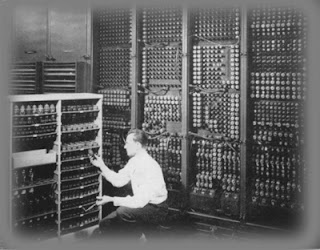Mary Meeker
I just got back from my July Snowboarding Trip. That's right, July snowboarding.
Even up there, I couldn't complete stop thinking about CAD, so between runs, while sitting at the watering hole, enjoying the sun reflecting off the slushy snow, I was thinking about CAD.
I wonder if there's a support group for that....
 |
| That's me, on the 4th of July at the top of Mammoth Mountain |
What I'm going to blog on today isn't exactly earth shattering. I'm talking about Autodesk Inventor Publisher Mobile viewer.
First, what is Autodesk Inventor Publisher? Inventor Publisher let's you create technical documentation, from a 2D instructions in a traditional format, or in 3D interactive formats.
If you've never seen Inventor Publisher before. Rob Cohee does a nice job describing it here.
If you've heard of Inventor Publisher, then you probably have heard of the mobile applications Autodesk Inventor Publisher Viewer, available at no charge on the Apple Store and Android Market.
Once again, I'll rely on Rob Cohee's excellent work. It would be a shame for it to go to waste, and I didn't get a chance to create my own, being on vacation and all!
Wonderful! If you have Inventor Publisher, you can publisher them to your mobile device. The Coefficient of Really Cool pegs the meter at a 9+.
But now we get to the part of the story where I thought things got interesting.
I was talking to someone about Inventor Publisher Mobile, and they stated, "I'm not giving our shop, iPads. They're too expensive and we can't afford to have them get broken."
Fair enough! I think of how long an iPad would last in the restoration hangar at Planes of Fame. Probably not long.
 |
| Could you picture an iPad or Droid plummeting to its death off the top of this Avenger? I can. |
But that doesn't mean that the mobile apps are immediately not an option. How many technical folks out there have personal Android phones, iPhones, or iPads we carry around?
 |
| I'm on a Droid! |
 |
| I'm on an iPad! |
Sure if you make components with "some assembly required", you can make the files available on your website. But what you don't do that?
To put it simply. I told this user to keep their options open. The shop is just one place you can use the mobile applications!
What if you have someone off site, in a different facility somewhere. Maybe they aren't "on the floor", but they need a quick reference of an assembly? Perhaps they don't have Inventor Publisher itself, and dealing with your laptop's boot time is a nuisance (I've been known to put something off because I didn't feel like waiting for my laptop to boot).
Then Inventor Publisher Mobile becomes an option. It's quick and it's interactive. You can zoom in on parts and inspect the assembly operations up close.
So the morale of the story? Don't limit yourself. Inventor Publisher Mobile applications just aren't for the shop. They're for anyone who can take advantage of them!






























